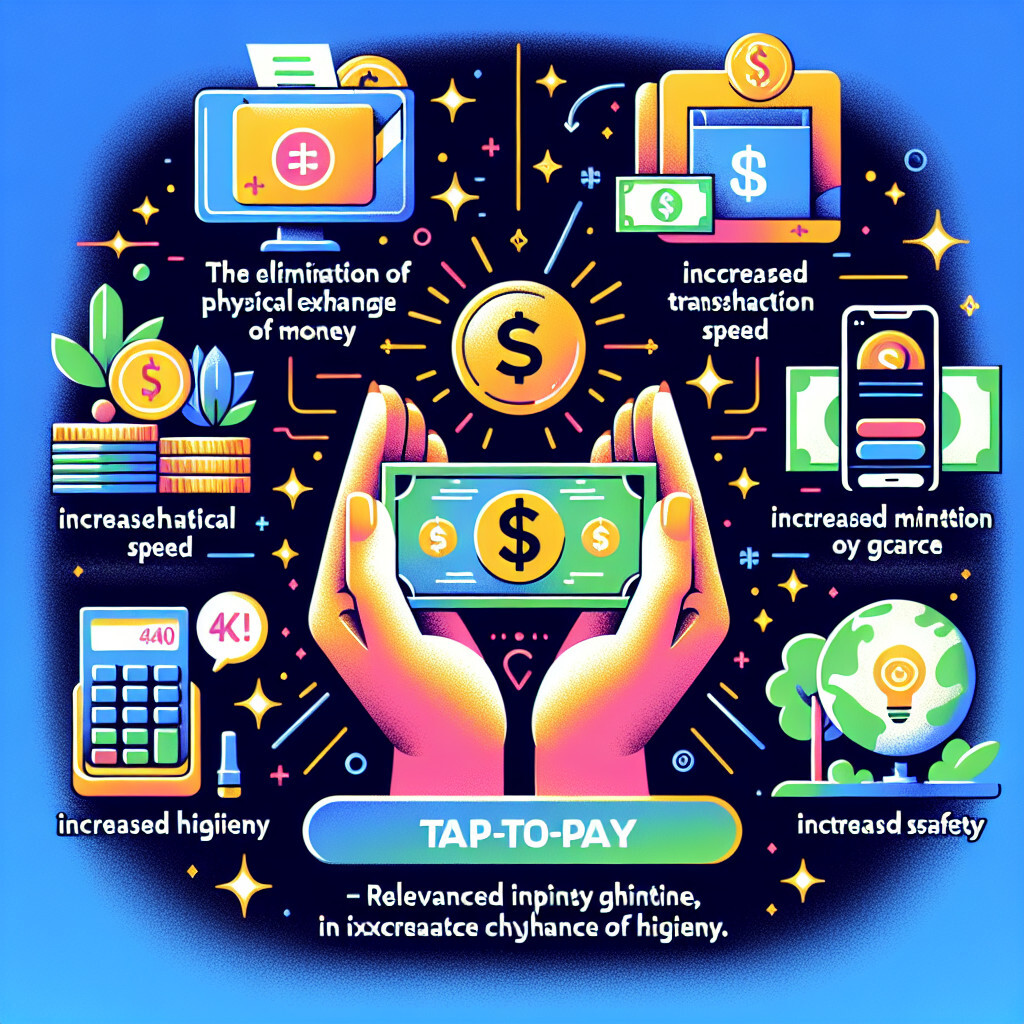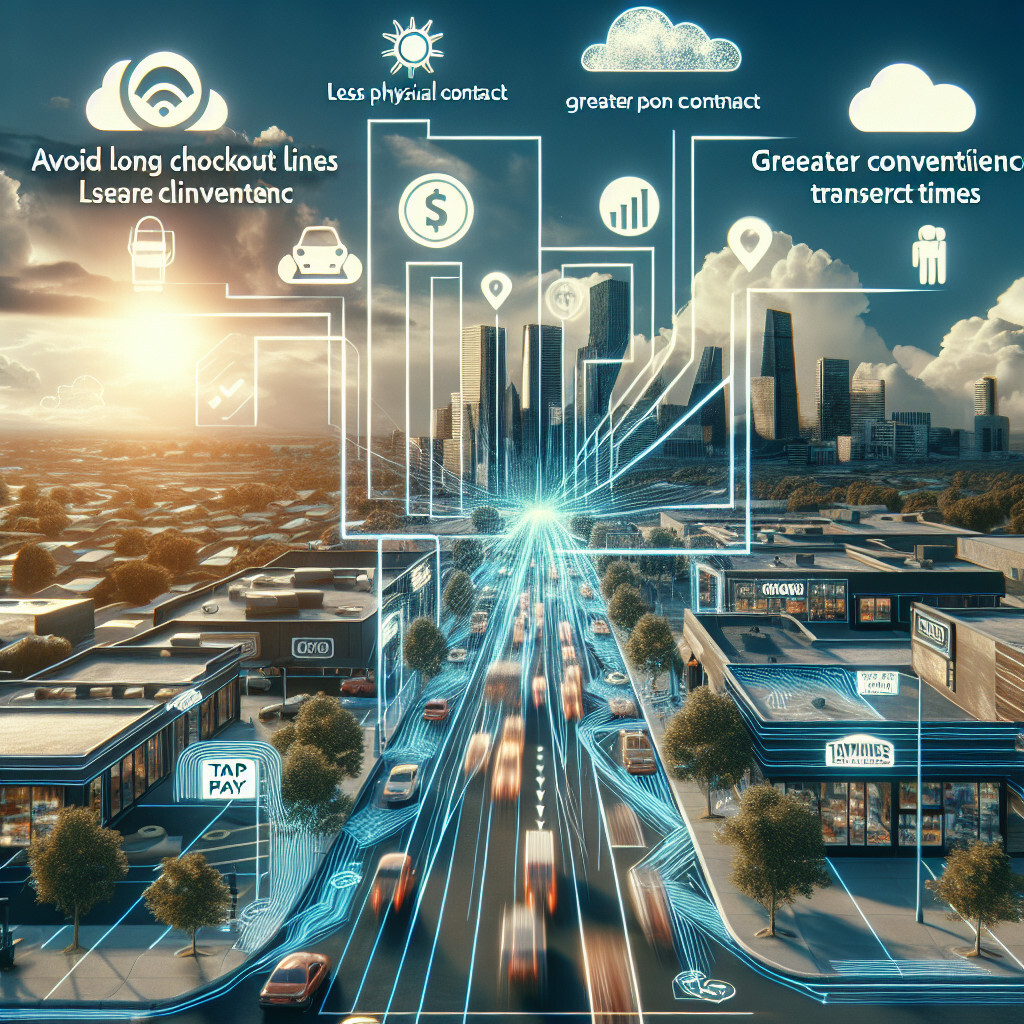-
Table of Contents
“Tap to Pay: The Fast, Secure, and Convenient Way to Handle Your Transactions!”
Introduction

Tap to Pay is a modern payment method that offers a range of benefits. It provides a quick, easy, and secure way to make transactions, reducing the need for cash or physical cards. This contactless payment method is not only convenient but also enhances security as it uses encrypted data for each transaction. It also reduces the time spent at checkout, making it a more efficient payment option. Furthermore, it promotes hygiene by eliminating the need to handle cash or touch payment terminals, which is particularly beneficial in the current pandemic situation.
Exploring the Advantages of Tap to Pay Technology
In the rapidly evolving world of digital technology, the way we conduct financial transactions has undergone a significant transformation. One such innovation that has revolutionized the payment landscape is the tap to pay technology. This technology, also known as contactless payment, allows consumers to make purchases by simply tapping their card or smartphone on a payment terminal. The benefits of tap to pay are manifold, ranging from enhanced convenience to improved security.
To begin with, the most apparent advantage of tap to pay technology is the convenience it offers. Gone are the days when consumers had to carry cash or write checks for every purchase. With tap to pay, transactions can be completed in a matter of seconds, thereby saving valuable time. This is particularly beneficial in high-traffic environments such as supermarkets and public transport, where speed is of the essence. Moreover, the technology also eliminates the need for PIN entry for small transactions, further streamlining the payment process.
Transitioning from the aspect of convenience, another significant benefit of tap to pay technology is its potential to enhance security. Unlike traditional payment methods, tap to pay transactions are encrypted, meaning that the information exchanged between the card and the terminal is scrambled to prevent unauthorized access. Furthermore, the technology employs a unique code for each transaction, which means that even if a hacker intercepts the transaction data, it cannot be reused for fraudulent purposes. This level of security is a significant step forward in protecting consumers from financial fraud.
In addition to convenience and security, tap to pay technology also offers the advantage of improved hygiene. In the wake of the COVID-19 pandemic, contactless payments have gained popularity as they minimize physical contact, thereby reducing the risk of virus transmission. This is a crucial consideration in today’s world, where public health is a top priority.
Moreover, tap to pay technology also facilitates better financial management. Many contactless payment platforms provide real-time transaction records, enabling consumers to track their spending more effectively. This feature can be instrumental in promoting responsible financial behavior and preventing overspending.
Lastly, the adoption of tap to pay technology can also contribute to environmental sustainability. By reducing the need for physical cash and paper receipts, contactless payments can help decrease paper waste and the environmental impact associated with its disposal. This is a significant benefit in an era where environmental consciousness is increasingly important.
In conclusion, the benefits of tap to pay technology extend beyond mere convenience. The technology offers enhanced security, improved hygiene, better financial management, and contributes to environmental sustainability. As the world continues to embrace digital transformation, it is expected that tap to pay technology will become even more prevalent, offering consumers a seamless, secure, and sustainable way to conduct financial transactions. While it is essential to remain vigilant about potential security risks, the advantages of tap to pay technology make it a compelling choice for consumers and businesses alike.
How Tap to Pay is Revolutionizing the Retail Industry
The advent of technology has brought about a significant transformation in various sectors, and the retail industry is no exception. One of the most notable advancements in this sector is the introduction of the tap to pay system. This innovative payment method is revolutionizing the retail industry by offering a plethora of benefits to both consumers and retailers.
Tap to pay, also known as contactless payment, is a secure method for consumers to purchase products or services using a debit, credit, smartcard, or another payment device by simply tapping the card on a point-of-sale terminal. This method eliminates the need for physical contact, thus making transactions faster and more convenient.
One of the primary benefits of tap to pay is its speed. Traditional payment methods often involve swiping a card, entering a PIN, or signing a receipt, all of which can be time-consuming. On the other hand, tap to pay transactions are completed in seconds, significantly reducing the time spent at the checkout counter. This is particularly beneficial during peak shopping hours when queues tend to be long, and speed is of the essence.
In addition to speed, tap to pay also offers enhanced security. The technology uses a method called tokenization to secure transactions. This involves replacing sensitive card information with unique identification symbols that retain all the essential data without compromising security. This means that even if a hacker intercepts the transaction data, they would not be able to access the actual card details, thereby protecting the consumer from potential fraud.
Moreover, tap to pay is a more hygienic payment method, especially in the current global health climate. As the name suggests, contactless payments require no physical contact between the payment device and the point-of-sale terminal. This reduces the risk of transmitting germs and viruses, making it a safer option for consumers and retail staff alike.
From a retailer’s perspective, tap to pay can lead to increased sales. The convenience and speed of contactless payments can enhance the customer experience, leading to higher customer satisfaction and potentially more repeat business. Furthermore, the ability to process transactions quickly can result in shorter lines and faster turnover, allowing retailers to serve more customers and increase their overall sales.
The integration of tap to pay into mobile wallets and wearable devices has also opened up new avenues for loyalty programs and targeted marketing. Retailers can use these platforms to offer personalized discounts and rewards, encouraging customers to make more frequent purchases and fostering customer loyalty.
In conclusion, the tap to pay system is revolutionizing the retail industry by offering a multitude of benefits. Its speed, security, and convenience are enhancing the shopping experience for consumers, while its potential to increase sales and customer loyalty is proving advantageous for retailers. As this technology continues to evolve and become more widespread, it is set to redefine the future of retail transactions.
The Role of Tap to Pay in Enhancing Consumer Convenience
The advent of technology has revolutionized the way we conduct our daily transactions, with the tap to pay system being one of the most significant advancements in recent years. This system, also known as contactless payment, has been lauded for its role in enhancing consumer convenience, offering a myriad of benefits that have transformed the payment landscape.
Tap to pay is a payment method that allows consumers to make purchases by simply tapping their card or mobile device on a point-of-sale terminal. This method eliminates the need for physical contact, thus reducing the time spent at the checkout counter. The speed and efficiency of tap to pay transactions are unparalleled, making it an attractive option for consumers who value their time.
Moreover, tap to pay offers a high level of security. The technology behind this system uses encrypted data, which makes it difficult for fraudsters to access sensitive information. In addition, the card or device never leaves the consumer’s hand during the transaction, reducing the risk of loss or theft. This level of security is a significant benefit, particularly in an era where cybercrime is a growing concern.
The convenience of tap to pay extends beyond speed and security. This system also allows for seamless integration with mobile wallets and other digital payment platforms. Consumers can link their debit or credit cards to their mobile devices, enabling them to make payments without carrying physical cards. This integration not only simplifies the payment process but also enhances the consumer’s shopping experience.
Furthermore, tap to pay supports the trend towards a cashless society. As more consumers embrace digital payments, the need for physical cash is diminishing. Tap to pay facilitates this transition by offering a convenient and efficient alternative to cash transactions. This shift towards cashless transactions also has broader implications for society, including reduced costs associated with printing and handling cash, and increased financial inclusion as more people gain access to digital payment methods.
The benefits of tap to pay are not limited to consumers alone. Businesses also stand to gain from this system. The speed and efficiency of tap to pay transactions can lead to shorter queues and faster turnover, which can enhance customer satisfaction and boost sales. Additionally, the data generated from these transactions can provide valuable insights into consumer behavior, enabling businesses to tailor their offerings to meet customer needs.
In conclusion, the role of tap to pay in enhancing consumer convenience cannot be overstated. This system offers numerous benefits, including speed, security, seamless integration with digital platforms, and support for a cashless society. As technology continues to evolve, it is expected that tap to pay will become even more prevalent, further transforming the payment landscape and enhancing the consumer experience. Despite the challenges that may arise, such as ensuring universal access and addressing security concerns, the potential benefits of tap to pay make it a worthwhile investment for both consumers and businesses.
Security Benefits of Using Tap to Pay Systems
The advent of technology has revolutionized the way we conduct our daily transactions, with tap to pay systems being one of the most significant advancements in recent years. These systems, also known as contactless payments, allow consumers to make purchases by simply tapping their card or smartphone on a payment terminal. While the convenience and speed of these transactions are undeniable, the security benefits of using tap to pay systems are equally compelling.
One of the primary security benefits of tap to pay systems is the use of tokenization. This technology replaces sensitive card information with a unique digital identifier, or token, which is used to process the transaction. The actual card details are never exposed during the transaction, reducing the risk of data theft. Even if a hacker were to intercept the token, it would be useless as it cannot be used to conduct further transactions. This level of security is far superior to traditional magnetic stripe cards, which transmit actual card details that can be easily copied or cloned.
In addition to tokenization, tap to pay systems also employ encryption to further secure transactions. Encryption involves converting information into a code that can only be deciphered with a specific key. This means that even if a hacker were to intercept the transaction data, they would not be able to understand or use it without the decryption key. This double layer of security – tokenization and encryption – makes tap to pay systems extremely secure.
Another security benefit of tap to pay systems is the ability to easily track and monitor transactions. Most tap to pay systems are linked to mobile apps or online accounts, allowing users to instantly view their transaction history. This real-time monitoring enables users to quickly identify and report any suspicious activity. Furthermore, many tap to pay systems also offer instant transaction alerts, providing users with immediate notification of any charges made to their account.
The use of biometric authentication in tap to pay systems also enhances security. Many smartphones equipped with tap to pay technology also feature fingerprint or facial recognition. This means that even if a user’s phone is stolen, the thief would not be able to use the tap to pay feature without the user’s unique biometric data. This adds an additional layer of security, ensuring that only the authorized user can make transactions.
Lastly, tap to pay systems limit the risk of lost or stolen cards. Since users can make payments with their smartphones, there is less need to carry physical cards. This reduces the chance of cards being lost or stolen and subsequently used for fraudulent transactions.
In conclusion, the security benefits of using tap to pay systems are manifold. From the use of tokenization and encryption to real-time transaction monitoring and biometric authentication, these systems offer robust security measures that protect users from fraud and data theft. While no system is completely foolproof, the advanced security features inherent in tap to pay technology make it a safer alternative to traditional payment methods. As such, consumers can enjoy the convenience and speed of contactless payments with peace of mind, knowing that their transactions are secure.
Q&A
1. Question: What is one of the main benefits of tap to pay?
Answer: One of the main benefits of tap to pay is its convenience. It allows for quick and easy transactions, reducing the time spent at the checkout.
2. Question: How does tap to pay enhance security?
Answer: Tap to pay enhances security by using encrypted digital tokens instead of transmitting your actual card details. This makes it harder for your information to be stolen or misused.
3. Question: Can tap to pay help with budgeting and tracking expenses?
Answer: Yes, tap to pay can help with budgeting and tracking expenses. Most digital wallets provide real-time notifications of transactions, making it easier to monitor spending.
4. Question: Does tap to pay offer any hygiene benefits?
Answer: Yes, tap to pay offers hygiene benefits as it is a contactless method of payment, reducing the need to handle cash or touch card machines, which can be beneficial during a pandemic.
Conclusion
In conclusion, tap to pay offers numerous benefits such as increased transaction speed, enhanced security, reduced physical contact, and improved convenience for both customers and businesses. It also supports the trend towards digitalization and cashless transactions.






